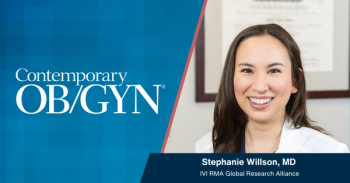
UK researchers raise hopes of preserving fertility for women with cancer
UK fertility experts have sounded a note of cautious optimism about the safety of preserving ovarian tissue and transplanting it back into women after cancer treatment.
UK fertility experts have sounded a note of cautious optimism about the safety of preserving ovarian tissue and transplanting it back into women after cancer treatment.
The optimism follows research reported today (Thursday 27 September) in Human Reproduction*, Europe's leading journal of reproductive medicine. It is the first reported non-test tube investigation in the world on the safety of grafting ovarian tissue from cancer patients.
Women are often rendered infertile after drug or radiation treatment for cancer and scientists have for a long time been looking at ways to make it possible for women to have babies
For those who have no partner, young girls, or women who require immediate treatment, embryo freezing is not feasible.
But another option - preserving ovarian tissue before treatment and transplanting it into the patient after treatment to reinstate fertility - in addition to being technically difficult, raises concerns that cancer cells lurking within the tissue could be re-introduced into the body with disastrous results.
Now a study in mice by teams from Leeds and Manchester** led by Dr S. Samuel Kim has shown that fears about reintroducing cancer may be over-stated (at least in lymphoma
The researchers grafted frozen and thawed ovarian tissue from 18 women with non-Hodgkins Lymphoma or Hodgkins Lymphomas (cancers of the lymph glands) into 30 immunodeficient mice. For controls, they grafted a disease-positive lymph node from a patient with a recurrent B-cell lymphoma, into three immunodeficient mice. None of the mice grafted with the ovarian tissue developed human lymphomas, but all three of the mice who received a graft from a diseased lymph node developed human B-cell lymphomas.
Dr Kim said: "Ovarian tissue from cancer patients has been banked at many centres worldwide in preparation ultimately for transplantation back into patients after successful treatment. However, this step requires prior assurance that the tissue will not transmit disease after grafting.
"This is the first reported in-vivo investigation of residual malignant disease in human ovarian tissue using a xenograft and this model, involving immunodeficient mice, may help to confirm clinical decisions about the risks of transplanting ovarian tissue back into cancer patients.
"Our patients were deliberately selected for having high-risk disease and in the three years following tissue harvesting, half have died of lymphoma. So the study was based on worst-case scenarios of highly aggressive lymphomas.
However, he warned that the follow-up period was relatively short because of the naturally short life span of the mice and that efforts to develop new techniques to detect residual disease should continue.
"Nevertheless, our findings are of immediate relevance to women with lymphomas who are considering banking ovarian tissue for fertility conservation and also to their physicians who need to provide them with appropriate advice. We can now be more optimistic about the application of ovarian cryopreservation and transplantation in cancer patients, although these reassuring findings should not be interpreted as an absolute indication of safety."
Dr Kim said the research teams were now working on finding a method to screen cancer cells in ovarian tissue from patients before transplantation, and on laboratory and animal techniques to grow and mature primordial ovarian follicles.
Notes:
* Ovarian tissue harvested from lymphoma patients to preserve fertility may be safe for autotransplantation. Human Reproduction. Vol 16. No 10. pp 2056-2060.
** The research teams involved: Centre for Reproduction, Growth and Development, University of Leeds; Department of Medical Oncology and Department of Histopathology, Christie Hospital, NHS Trust, Manchester; Department of Cancer Genetics, Paterson Institute for Cancer Research
Researchers were: S. Samuel Kim (currently in USA), John Radford, Martin Harris, Jenny Varley, Anthony J Rutherford, Brian Leiberman, Steven Shalet and Roger Gosden (currently in Canada).
References:
Human Reproduction is a monthly journal of the European Society of Human Reproduction and Embryology (
Embargoed: 00:01hrs BST Thursday 27 September 2001
1 PDF version of this press release and full embargoed text of the paper with complete results and participating research teams, can be found from 09.00 hrs BST Monday 24 September on website
2 Human Reproduction is a monthly journal of the European Society of Human Reproduction and Embryology (ESHRE). Please acknowledge Human Reproduction as a source. ESHRE's website is:
3 Printed texts available on request from Dr Helen Beard, Managing Editor. Tel: +44 (0) 1954 212404 or email:
Newsletter
Get the latest clinical updates, case studies, and expert commentary in obstetric and gynecologic care. Sign up now to stay informed.









